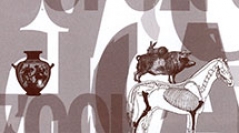

 Anthropozoologica
48 (1) - Pages 75-88
Anthropozoologica
48 (1) - Pages 75-88The archaeological site at Iita in Northwest Greenland offers a unique opportunity to investigate the importance of small game in Inughuit (Polar Eskimo) and Thule subsistence. The presence of large colonies of dovekie (Alle alle) at Iita has played a key role in attracting people to this area for the past eight hundred years. An estimated 15 million pairs of dovekie breed along the northwest coast of Greenland during the summer months, offering humans access to reliable meat for winter storage as well as bird skins for clothing. Of the +25,000 faunal remains recovered from the 2006 excavation of two winter houses at Iita, dating from AD 1400-1920, the majority were dovekie bones (N=17,287), which suggests a reliance on these small birds. Under optimal foraging models, the presence of small animals in the diet is generally associated with reduced foraging efficiency, but many such interpretations do not account for the changed costs and benefits associated with mass capture. Ethnographic accounts from Northwest Greenland indicate that dovekie were captured en masse using nets, changing the appropriate unit of comparison from the individual dovekie to the total prey biomass caught simultaneously. This paper addresses the importance of dovekie as a reliable food source at Iita, and considers whether they were ranked highly as a result of mass capturing technology or whether they were a starvation food, relied upon when large game was unobtainable due to loss of important hunting technology.
Dovekie, Alle alle, Mass capturing, Thule, Inughuit, Northwest Greenland, Optimal foraging.